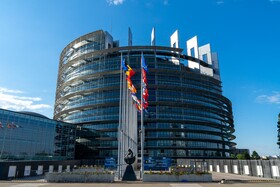


The CAP was established against the background of the creation of a common policy for the agricultural sector among the EU member states. The aim of the common policy: CAP was to secure food supplies in Europe after the end of the war, to contribute to the conservation of natural resources and to boost the economic development of rural areas. Thus, in 1957, the then six founding states of the European Economic Community drew up guidelines for a future common agricultural policy, thus laying the foundation for the CAP. Trade restrictions were to be dismantled, fair competition between regions created and surpluses avoided. The CAP was then introduced in the European Union in 1962. Today, the common policy of the EU member states is still intended to promote a crisis-resistant agricultural sector that guarantees income security for the 14 million farmers in the EU, strengthens environmental and climate protection and promotes the development of rural areas. Central specifications regarding the design of agricultural policy in the member states and its financing are made at the EU level. Around 387 billion euros, or more than 40 percent of the EU budget, will be available for this purpose in the next funding period from 2021-2027.
The first pillar comprises direct payments to farmers, which are provided per hectare of agricultural land if basic requirements are met. The requirements derive from EU regulations and directives in the areas of environmental and animal welfare and standards for maintaining land in "good agricultural and environmental condition". Direct payments are therefore payments that are provided independently of production. A core element of direct payments is also so-called greening, which obliges farmers to maintain permanent grassland, to set aside at least 5 percent of their arable land as ecological priority area, to maintain maximum proportions of cultivated crops and to apply methods that promote climate and environmental protection. On average, direct payments account for about 40 percent of farm income and are thus the most important item of CAP support.
The second pillar of the CAP includes support programmes for sustainable and environmentally friendly agriculture and rural development. In particular, the second pillar is home to agri-environmental and climate measures (AECM), organic farming measures and animal welfare measures. These are the main instruments for achieving environmental goals. In addition to environmental and climate protection, these measures are primarily aimed at maintaining and increasing biodiversity, improving soil structure, reducing the use of fertilisers and plant protection products, and animal welfare.
With the implementation of AUCM and animal welfare measures as well as the management of organic farming, farmers voluntarily commit themselves to comply with the requirements laid down in the funding guidelines of the Länder for a period of usually five years - in the case of animal welfare measures of at least one year. Farmers who commit themselves to applying AUCM, organic farming or animal welfare measures are thus providing important social services.
The central funding instrument for the development of rural regions is the European Agricultural Fund for Rural Development (EAFRD). The EU member states must invest at least 30 percent of the funding allocated to them in rural development programmes. The priority in its support is above all to build up a strong competitiveness of farmers in the long term and to ensure the sustainable management of natural resources. In addition, agricultural businesses are to be strengthened through investments in agriculture.
The shape of the CAP for the coming funding period can be found here.